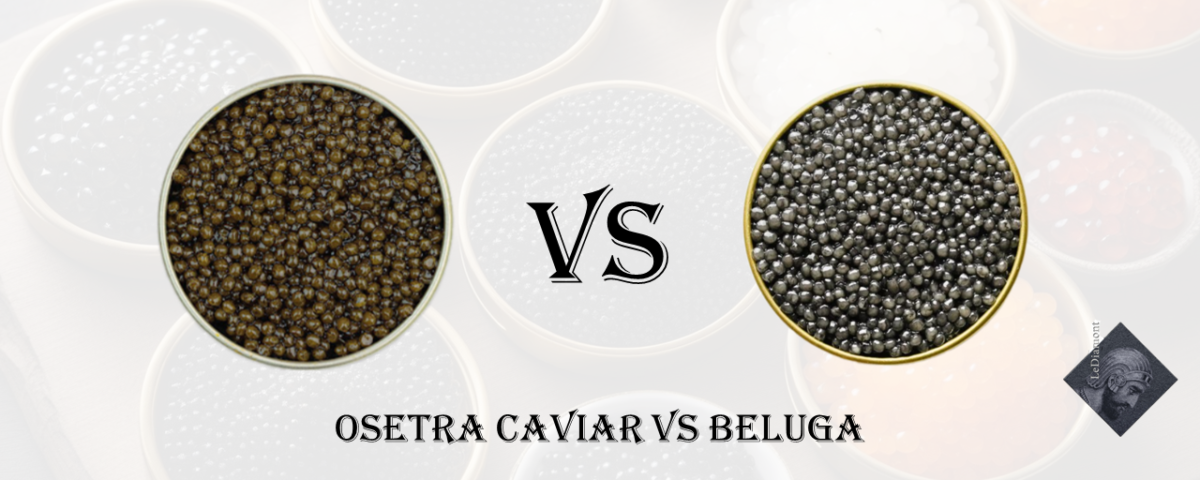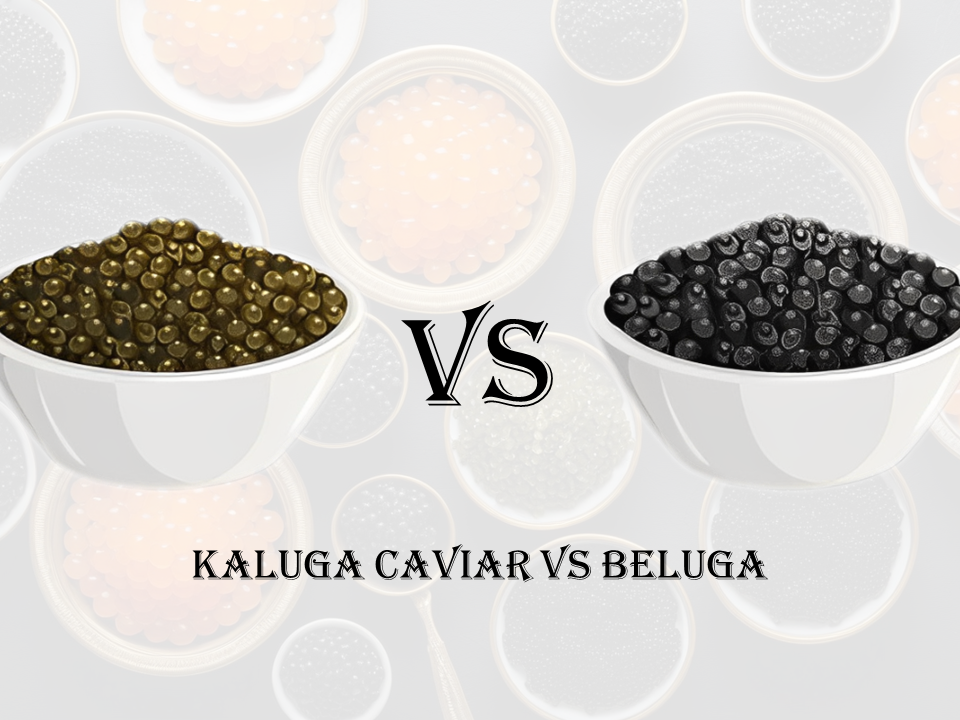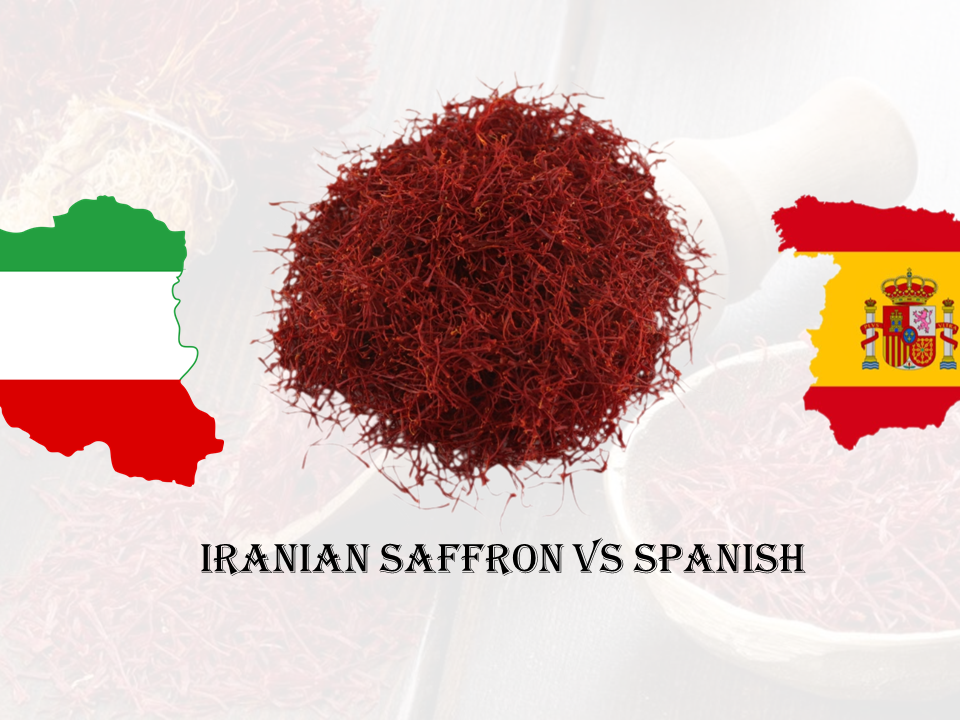osetra caviar vs beluga

Iranian Saffron VS Spanish Saffron
September 8, 2024
Saffron VS Turmeric
September 14, 2024From the zesty masago on your sushi to the rich, dried Italian bottarga, fish roe comes in many varieties. However, when it comes to luxury, nothing quite matches caviar, especially in the debate of Osetra caviar vs Beluga. Caviar is considered one of the most opulent foods in the world. While many people often group all high-end, salt-cured fish eggs together, true caviar is unique. It specifically refers to processed roe from sturgeon, a species found in the Caspian Sea and temperate waters of North America, with 29 types of sturgeon worldwide contributing to this prized delicacy.
Among the most renowned are Beluga and Osetra caviar, each boasting unique characteristics. Beluga is celebrated for its rich, large pearls and luxurious appeal, while Osetra has smaller, lighter eggs with a more delicate flavor. If you’ve ever wondered about Osetra caviar vs Beluga, their differences in taste, size, and exclusivity set them apart.
For the discerning palate, the question of Osetra caviar vs Beluga can be puzzling. But with this guide, you can confidently choose the perfect caviar for your next indulgence.
Beluga Caviar
Beluga caviar comes from the Huso huso sturgeon. It is one of the largest species in the sturgeon family and can grow up to 20 feet in length. These fish can live for a century, swimming in the Caspian and Black Sea areas. Beluga caviar boasts an intricate flavor profile—savory and slightly salty notes, as well as a smooth texture and large eggs, around 3–4.5 mm in diameter, which are quite popping. The color ranges from deep brown to pitch black, having a lovely sheen. Whenever people first think of black caviar, they imagine Beluga.
As a result of overfishing, the species may be on the brink of extinction, and it is found in very few numbers in the Caspian and Black Seas. The U.S. banned the import of wild-caught Beluga caviar in 2005, which has added to its exclusivity. However, farm-raised Beluga caviar is still available.
Lediamont’s beluga collection
- Iranian Beluga Caviar AAA
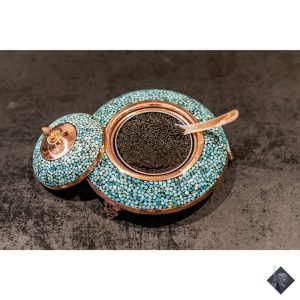
Iranian Beluga Caviar AAA is a premium delicacy sourced from the rare Huso Huso sturgeon. Known for its large, 3.5mm eggs with a light to dark gray hue, this caviar offers a refined, delicate taste that captivates even the most sophisticated palates. Its smooth texture and luxurious flavor make it a must-try for gourmet enthusiasts. Imported from Iran, this prized caviar is made with only sturgeon eggs, salt, and preservatives (E284, E285). Proper storage is essential—keep it between -3° and 3°C for freshness. Once opened, it should be enjoyed within 3 days. Discover the allure of Iranian Beluga Caviar AAA and why it’s celebrated globally for its exceptional quality and taste.
- Iranian Black Beluga Caviar AA

Iranian Beluga Caviar AA is a luxurious treat sourced from the Huso Huso sturgeon, renowned for its exceptional quality and flavor. With grain sizes ranging from 3.0 to 3.3mm and a light to dark gray hue, this delicacy offers a refined, long-lasting taste with rich hazelnut undertones. Its delicate texture and subtle flavor create an unparalleled dining experience for caviar enthusiasts. The caviar is made from sturgeon eggs, salt, and preservatives (E284, E285), and is an allergen for those sensitive to fish. For optimal freshness, store between -3° and 3°C, with a shelf life of up to 3 months before opening. Once opened, savor it within 3 days. Indulge in the luxurious experience of Iranian Beluga Caviar AA today!
Osetra Caviar
Osetra caviar originates from a sturgeon of the same name: Osetra—Acipenser gueldenstaedtii. These are large fish, much like the Beluga sturgeon, reaching over 6 feet in length and weighing about 400 pounds. While indigenous to the Caspian Sea, Osetra sturgeons are relatively robust, so they may be farmed in the U.S., for example. Given their endangered status in the wild, most of the roe comes from farming operations.
The roe matures over up to ten years and has a range of colors, tinged with a characteristic yellow hue. The eggs are smaller and firmer in comparison with other caviar products, but they have a pleasantly crunchy texture. The gustatory characteristics are nutty and buttery, with a perfectly oily texture in the mouth and a light salt taste. With such a fine taste and attractive appearance, Osetra conquers the hearts of all caviar lovers. It’s also more accessible and a bit more budget-friendly, making it a great choice if you’re new to caviar.
Lediamont’s osetra collection
- Polish Osetra Caviar
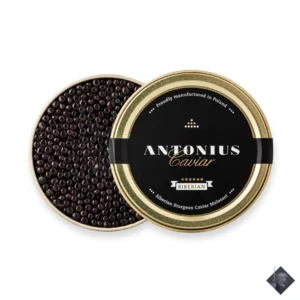
Polish Osetra Caviar, derived from the Acipenser gueldenstaedtii (Russian sturgeon), is known for its large, elegant roe pearls in shades of grey, olive, brown, and golden. This exquisite caviar offers a slightly nutty flavor with a velvety, buttery finish, making it a refined delicacy for caviar connoisseurs. The roe size, ranging from 2.7 to over 3 mm, determines the caviar’s quality, with a 6-star rating for pearls larger than 3 mm. Polish Osetra Caviar is highly prized for its size, color, and distinctive taste, delivering an unmatched gourmet experience. Indulge in the finest caviar with Polish Osetra, perfect for those seeking the ultimate in luxury dining. - Iranian Golden Osetra Caviar
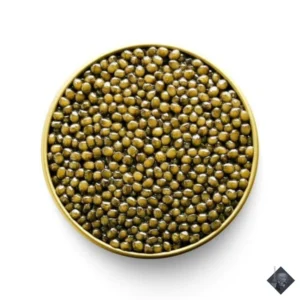
Iranian Golden Osetra Caviar is a true delicacy, known for its creamy, nutty eggs and perfectly balanced flavor. Sourced from the oldest female sturgeon in the Caspian Sea, each royal-sized egg measures an impressive 3.2 mm. This luxurious caviar delivers a rich, saturated taste with a delicate hint of hazelnut, creating a refined gourmet experience. Renowned as the second most expensive caviar after Iranian Beluga, Iranian Golden Osetra Caviar is prized by connoisseurs worldwide for its silky texture and harmonious blend of salt and butter. Indulge in this exquisite delicacy and elevate your dining experience with the finest caviar from Iran.
osetra caviar vs beluga; Differences Between Osetra and Beluga
When comparing Osetra caviar vs Beluga, the differences are often noticeable in appearance. Beluga caviar typically features a much darker color, ranging from deep brown to black, similar to black olives. This variety also has a distinctive pearlescent glow, giving it a shiny, glittering appearance. The eggs of Beluga caviar are generally larger in diameter compared to Osetra caviar, sometimes up to 20% bigger.
In contrast, Osetra caviar vs Beluga reveals a broader spectrum of colors and sizes. Osetra caviar can range from light yellow to deep black and various shades of golden brown, with some eggs exhibiting a golden tint. Although Osetra caviar is usually lighter in color, it can sometimes appear similar to Beluga.
Taste and price also highlight differences between these two types of caviar. Beluga caviar is known for its luxurious, buttery taste with subtle nutty and creamy notes, making it the most expensive of the two. Osetra caviar, on the other hand, offers a nuttier and fruitier flavor with a hint of brininess, a firmer texture, and a stronger aftertaste. While Osetra is relatively more affordable than Beluga, it remains a distinguished delicacy.
Conclusion
Osetra caviar vs Beluga caviar each offer unique and exceptional culinary experiences that set them apart from other fish eggs. Beluga caviar is renowned for its rarity and exquisite flavor, making it one of the priciest foods in the world. The cost of Beluga caviar can reach several thousand dollars per pound due to factors such as the difficulty of sourcing, the ban on wild-caught sturgeon eggs in many countries, limited suppliers, and the decade-long process of producing a single batch.
In contrast, Osetra caviar vs Beluga caviar reveals a more moderate price point. Osetra caviar typically costs around half as much as Beluga, offering a quality alternative at a more accessible price. While Beluga caviar is celebrated for its refined taste with sweet and salty notes, Osetra caviar provides a rich flavor experience that varies by variety, though it is generally distinct from the profile of Beluga. Whether you opt for the opulent Beluga or the sophisticated Osetra, both ensure a high-quality caviar experience.






